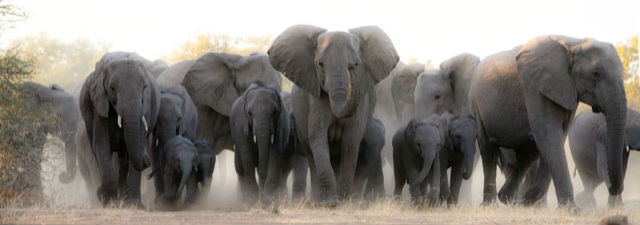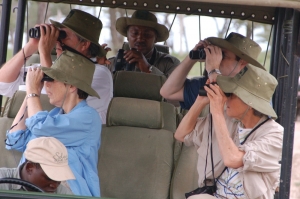
The two most frequently asked questions from my safari clients are: What is the best camera to bring on a safari? And, should I bring binoculars?
I’m not a techy person so I tell my clients what I use, and what I have seen hundreds of safari travelers use over the years. In this post, I share with you the same information I give to all my safari clients. I hope it helps in your search for the best camera and binoculars for a safari.
CHOOSING A CAMERA FOR YOUR SAFARI
The camera you choose for safari is one of your most important decisions. It makes sense – Africa’s wildlife presents many opportunities to capture amazing photos.
That being said, you may be surprised to know that not everyone takes a camera when they go on safari. For instance, one of my clients, who has been on two of my safaris, says she likes to be with the animal in the present moment without worrying about fidgeting with a camera and trying to capture the best photo.
She is an exception. Most people come to Africa with a camera.
Here are my favorite options for cameras:
Some people rely on using only their smartphones to capture their safari experience. The advantage is phones are lightweight and easy to use. I have noticed that these people capture moments that clients with more gear often miss. The phones are on automatic, ready to shoot whatever is happening. And it is easy to take videos. The disadvantage is the zoom is limiting if you want to later blow up your photo or video at best. There are telephoto lenses you can screw onto your smart phones but currently they only offer a 2x zoom.
The most popular cameras that people bring are DSLR’s. These cameras are generally for people who are more serious about photography. They are great if you want to bring different lenses. A professional photographer friend tells me that to capture those quintessential wildlife close-ups a 600mm lens is required. The disadvantage is these cameras are heavy and bulky, two things to avoid when packing for your weight limited safari.
There is a relatively new kind of camera called a mirrorless. With all the advantages of the DSLR, they are lighter, at a good price point, yet still allow you to add different lenses. I use the Sony 6000 and am very happy with it.
A final option is to buy the smallest all-in-one camera with the largest magnification available. These are great cameras. They are lightweight, not expensive, and take great shots, although limited in zoom range. Canon makes great ones.
And Nikon’s new Coolpix B600 gets great reviews for an automatic camera with a lens that is equivalent to a 1,000 lens.
BEST BINOCULARS FOR A SAFARI
My father is a world-class birder. I have never bought a pair of binoculars because he gives me his hand me downs. One pair has been with me on 10 safaris. It’s a basic Nikon.
I spend more time behind my binoculars then I do behind my camera. To get a great photo the angle and lighting, and the behavior of the animal has to be just right. But no matter what the animal is doing, or how bad the lighting, I am always fascinated by just watching the animal. And binoculars enhance that experience.
There are often an extra pair of binoculars in the safari truck, but not always. And if there is a pair, they aren’t necessarily of good quality so I do recommend bringing your own pair.
If you have a decent pair, bring those. A lot of the time on safari you will be close enough to the animals to watch them without binoculars. If you do use your binoculars you will be scoping out the blood on the lion’s mane, or the flies around the hyena’s mouth, or the toenails of the elephants.

If you don’t own a decent pair, here is one that many birders own and love: The Nikon Monarch. Or look for a good basic pair from Eagle Optics.
Keep in mind that driving around in the safari trucks kicks up a lot of dust. So you will want to have protective bags and covers for your camera, lenses, and binoculars.
When you use any of the links provided to purchase your safari gear from Amazon, a small portion will automatically go to SavingWild to help wildlife in Africa.
For the perfect hat to take on your safari check out my post here.
*Featured image of elephants taken by safari client Laura Voit.
